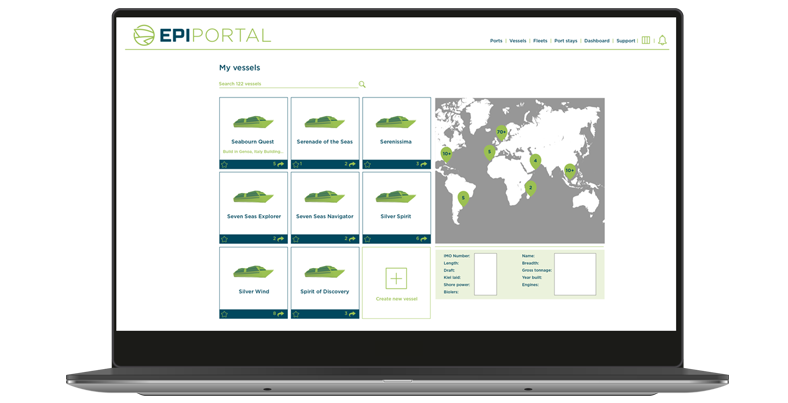How the EPI Works
The EPI reporting tool includes four core elements; the EPI Baseline, the EPI Portal, the EPI Score, and the EPI Reports.
The EPI Baseline
Based on major influencing factors including CO2, SO2, NOx and particle levels, the EPI establishes a ship’s maximum tolerable environmental impact while at port.
This is known as the ship’s EPI Baseline, and it will be key in gauging the ship’s efforts in improving operational efficiency and sustainability going forward.
The EPI Portal
With its EPI Baseline in place, upon departure from port, a ship’s crewmember will sign into the secure EPI Portal. Here they will record the vessel’s key utility data, such as fuel consumption, emission levels, and power usage during the ship’s time at port.
The EPI Score
The data submitted via the EPI Portal is then compared to the ship’s EPI Baseline. Once again, the EPI calculation comes into play and an EPI Score between 0 and 100 is calculated.
Ships are awarded higher scores for beating their EPI Baseline and lower scores for falling short.
Max and min score per ship based on several calls to one port
The EPI Reports
For each ship’s stay at port, the EPI Reports are generated in two main forms; the Port Operator Report and the Ship Owner Report.
The Port Operator Report provides port operators with the EPI Score of each ship. This makes it easy to recognise which ships are operating more efficiently than projected while at port. The Port Operator Report also includes cumulative year-to-date data for all of a port’s ship visits. This insight allows port operators to identify challenging areas and develop ways to support ship owners in reducing port pollution.
The Ship Owner Report provides ship owners with a full report of their ship’s performance while at port. This includes their EPI Score, but also a detailed breakdown of their data. Ship owners can then quickly and clearly see which areas offer opportunities for greater efficiency and potential associated benefits.




